Ruckus Wireless ZoneFlex R310 Handleiding
Ruckus Wireless
Access point
ZoneFlex R310
Bekijk gratis de handleiding van Ruckus Wireless ZoneFlex R310 (4 pagina’s), behorend tot de categorie Access point. Deze gids werd als nuttig beoordeeld door 34 mensen en kreeg gemiddeld 4.6 sterren uit 17.5 reviews. Heb je een vraag over Ruckus Wireless ZoneFlex R310 of wil je andere gebruikers van dit product iets vragen? Stel een vraag
Pagina 1/4

Copyright © 2015 Ruckus Wireless, Inc. Page 1 of 4
Published 24 July 2015, Part Number 800-70972-001 Rev A
ZoneFlex R310 Access Point
Quick Setup Guide
This Quick Setup Guide provides step-by-step instructions on how to set up
your Ruckus Wireless ZoneFlex R310 access point. After completing the
steps in this guide, you will be able to place the access point at your site
and provide network access to wireless clients. The rest of this document
refers to the ZoneFlex R310 access point as an AP.
BEFORE YOU BEGIN
Before deploying your Ruckus Wireless device, please check the Ruckus
Wireless Web site for the latest software and release documentation.
• Release Notes and User Documents are available at
http://support.ruckuswireless.com/documents
• Software Upgrades are available at
http://support.ruckuswireless.com/software
• Open Source information is available at
http://support.ruckuswireless.com/open_source
T HIS GUIDE IN O LTHER ANGUAGES
•请从以下网站获得该指南的简体中文版
https://support.ruckuswireless.com
• Vous trouverez la version française de ce guide à l'adresse suivante
https://support.ruckuswireless.com
•こ の ガ イ ド の日本語版は https://support.ruckuswireless.com
で ご覧 く だ さ い
•이 가이드의 한국어 버전은 웹 사이트
(https://support.ruckuswireless.com
) 에서 확인하시기 바랍니
다
• Veja a versão em português (Brasil) deste guia em
https://support.ruckuswireless.com
• Puede ver la versión en español (América Latina) de esta guía en
https://support.ruckuswireless.com
Figure 1. ZoneFlex R310 AP
PACKAGE CONTENTS
• One ZoneFlex R310 access point
• Two mounting screws and plastic wall anchors
• One T8 5mm M2.5 Torx locking security screw
• One unit removal pin
• Regulatory flyer
• Product warranty statement
• Declaration of conformity, if required
• Ruckus Wireless AP Getting Started Guide
• This Quick Setup Guide
C ONFIGURING THE AP
•Step 1: Collecting the AP MAC Address
•Step 2: Collecting Setup Requirements, Hardware, and Tools
•Step 3: Connecting Your Computer to the AP
•Step 4: Preparing Your Computer for AP Setup
•Step 5: Logging Into the AP Web Interface
•Step 6: Customizing the Wireless Settings
•Step 7: Placing the AP at the Site
•Step 8: Verifying the Installation
Step 1: Collecting the AP MAC Address
• Write down the MAC address (12 alphanumeric digits) from the
outside of the AP.
Step 2: Collecting Setup Requirements, Hardware,
and Tools
• A computer with Ethernet adapter running Windows 7 or equivalent,
with Firefox or equivalent web browser.
• One Cat 5e (or better) Ethernet cable.
• T8 Torx screwdriver.
• An AC-to-12VDC power adapter (sold separately)
--OR--
an 802.3af-compliant Power over Ethernet (PoE) switch or PoE
injector.
Step 3: Connecting Your Computer to the AP
AAfter removing the AP from its package, place it next to your
computer.
BUsing an Ethernet cable, connect your computer’s network port to the
POE IN port on the AP.
CConnect the AC power adapter (sold separately) to the 12VDC AP
port, and plug the AC power adapter into a convenient and protected
AC power source.
Alternatively, connect the POE IN port to a PoE injector or PoE switch
for both power and network connectivity.
Figure 2. AP rear panel
DAfter bootup, verify that the PWR LED on the AP is a steady green.
Step 4: Preparing Your Computer for AP Setup
AOn your Windows 7 computer, configure your network adapter from
the Local Area Connection settings as follows:
• Start > Control Panel > Network and Sharing
Center > Change Adapter Settings
Note:
The minimum software revision for the AP is base image 100.x or
later, SmartZone 3.2 or later, or ZoneFlex 10.0 or later.
The rest of this document collectively refers to the SCG SZ, vSZ, ZD,
and other controllers as Ruckus Wireless controllers.
Important!
If the AP is to be managed by a Ruckus Wireless controller, then
follow the controller user documents to connect the AP to your local
network and configure it for initial operation. In that case, you may not
need to complete the following steps.
Note:
The following procedures assume that Windows 7 is the operating
system. Procedures for other operating systems are similar.

Copyright © 2015 Ruckus Wireless, Inc. Page 2 of 4
Published 24 July 2015, Part Number 800-70972-001 Rev A
BEdit the TCP/IPv4 address settings as follows:
• Local Area Connection > Properties > Internet
Protocol Version 4 (TCP/IPv4) > Properties
The Internet Protocol Version 4 (TCP/IPv4) Properties dialog box
appears.
CSelect Use the following IP address (if it is not already selected) and
then make the following entries:
• IP address: 192.168.0.22 (or any available address in the
192.168.0.x network, except 192.168.0.1, which is the default
used by the ZoneFlex R310 AP)
• Subnet mask: 255.255.255.0
• Leave the DNS server and Default gateway fields empty.
D OKClick to save your changes. Your changes are put into effect
immediately.
Step 5: Logging Into the AP Web Interface
As specified in Step 4: Preparing Your Computer for AP Setup, the
computer should be connected to your AP through the Ethernet port and
powered on, ready for setup.
AOn your computer, open a Web browser window.
BIn the browser, enter https://192.168.0.1 to connect to the AP.
CPress <Enter> to initiate the connection. When a security alert dialog
box appears, click OK/Yes to proceed.
DWhen the Ruckus Wireless Admin login page appears, enter the
following:
• Username: super
• Password: sp-admin
EClick Login.
Step 6: Customizing the Wireless Settings
AOn the AP Web interface menu, click Configuration >
Wireless > 5G or Configuration > Wireless > 2.4G. The
Configure > Wireless > Common options appear.
BVerify that the following options are active:
•Channel: SmartSelect
•Channel Width: 20 MHz, 40 MHz, or 80 MHz (default).
•Country Code: Select the country in which the AP will be
operating.
CClick Update Settings if you made any changes.
DClick any of the eight Wireless # (Wireless LAN Number) tabs at the
top of the page.
EIn Wireless Availability, click Enabled.
FDelete the text in the SSID field, and then type a name for your network
that will help your users identify the AP in their wireless network
connection application.
GClick Update Settings to save your changes.
HIf required, repeat Steps D-G for any other Wireless # (Wireless LAN
Number) interface that you want to enable.
IClick Logout to exit the Web interface.
JDisconnect the AP from the computer and from the current power
source, and then restore your computer to its original network
configuration.
Step 7: Placing the AP at the Site
AMove the AP to its permanent location (accessible to both AC or PoE
power and network connection).
BUse a Cat 5e (or better) Ethernet cable to connect your network (or PoE
injector or switch) to the POE IN port on the AP.
--OR--
If you are not using an 802.3af-compliant PoE switch or PoE injector,
then connect the AC power adapter to the AP, and then to a
convenient power source.
CVerify that the POE IN port LED is lit.
Step 8: Verifying the Installation
AUsing any wireless-enabled computer or mobile device, search for and
select the wireless network you previously configured.
BIf you can connect, open a browser and link to any public Web site.
Congratulations! Your wireless network is active and ready for use. If you
need to configure advanced wireless settings, such as enabling security,
refer to the Ruckus Wireless Indoor AP User Guide.
I NSTALLING THE AP
The AP can be mounted on a flat surface, on a drop-ceiling T-bar, or on a
pole or flat surface. Refer to the following sections:
•Mounting on a Flat Surface
•Removing the AP from Flat-Surface Mounting Screws
•Mounting the AP on a Drop-Ceiling T-Bar
•Removing the AP from a Drop-Ceiling T-Bar
•Mounting the AP on a Flat Surface or Pole Using the Optional
Secure Mounting Bracket
•Removing the AP from the Optional Secure Mounting Bracket
Mounting on a Flat Surface
The factory-supplied mounting screws and plastic wall anchors allow you
to attach the AP to a wall or ceiling.
AUse the Mounting Template on the last page of this guide to mark the
locations for two drill holes on the mounting surface.
BUse a 4.75mm (3/16”) drill bit to drill holes approximately 25mm (1”)
deep into the mounting surface.
CInsert the factory-supplied anchors (A in Figure 3) and mounting
screws (B) into the mounting surface, leaving approximately 6 mm
(1/4”) of the screw heads protruding from the surface.
Figure 3. Mounting the AP on a flat surface
DPlace the AP onto the mounting screws so that the screw heads enter
the keyholes on the AP enclosure (C), and gently press down on the AP
until the locking tab in the upper AP keyhole locks the AP onto the top
mounting screw.
Important!
Write down all of the currently active settings so you can restore your
computer to its current configuration when this procedure is
completed.
Note:
If you purchased the AP in the United States, then this value is fixed to
United States at the factory and is not user configurable. If you
purchased the AP outside the United States, then verify that the value
is set to your country or region. Selecting the correct country code
ensures that the AP uses only the radio channels allowed in your
country or region.
A
B
C

Copyright © 2015 Ruckus Wireless, Inc. Page 3 of 4
Published 24 July 2015, Part Number 800-70972-001 Rev A
Removing the AP from Flat-Surface Mounting
Screws
ATo remove the AP from the factory-supplied mounting screws, gently
press the unit removal pin (A in Figure 4) into the access hole on the
end of the AP to release the bracket locking tab in the upper keyhole.
Figure 4. Removing the AP from the screw heads
BPush the AP up and pull it away from the mounting screw heads.
Mounting the AP on a Drop-Ceiling T-Bar
AOrient the AP so that the T-bar is positioned between the T-bar clips
as shown in Figure 5, then rotate the AP until the third T-bar clip
catches the T-bar and the latch locks the T-bar in place (Figure 6).
Figure 5. Initial position
Figure 6. Final position
B(OPTIONAL, for added security.) Using a Torx T8 screwdriver, insert the
locking screw (A) into the hole near the latch to lock the AP in place.
Removing the AP from a Drop-Ceiling T-Bar
• To remove the AP, first remove the security screw, then depress the
latch while rotating the AP so that the T-bar clips disengage the T-bar.
Mounting the AP on a Flat Surface or Pole Using the
Optional Secure Mounting Bracket
The customer-ordered Ruckus Wireless secure mounting bracket kit
(ordering part number 902-0120-0000) includes a metal mounting bracket
and provides greater security when attaching the AP to flat surfaces (walls
and ceilings) and to poles.
• If you are mounting the AP on a flat surface, then you will also need an
electric drill with a 4.75mm (3/16”) drill bit, and the four No. 6 zinc
plated screws and plastic wall anchors included with the kit.
• If you are mounting the AP on a truss or pole, then you will also need
the two customer-supplied stainless steel pipe clamps.
Continue with the following:
AIf you are mounting the AP on a flat surface, then use the secure
mounting bracket as a template to mark the locations for four drill
holes on the mounting surface. There are four screw holes available on
the secure mounting bracket.
Fasten the bracket to the flat surface using four mounting screws and
plastic wall anchors and continue with Step C.
BIf you are mounting the AP on a pipe or pole, then feed the two
customer-supplied stainless steel clamps through the slots on the
secure mounting bracket. Use common hand tools to tighten the
clamps around the pipe or pole.
After the bracket is attached, continue with Step C.
Figure 7. Attaching the AP to the secure mounting bracket
CInsert the two studs on the secure mounting bracket (A) into the
keyholes on the bottom of the AP.
DSlide the AP toward the Ethernet port until the locking tab in the upper
AP keyhole locks the AP onto the top mounting bracket stud.
A
A
A
Product specificaties
| Merk: | Ruckus Wireless |
| Categorie: | Access point |
| Model: | ZoneFlex R310 |
| Kleur van het product: | Wit |
| Gewicht: | 220 g |
| Breedte: | 135 mm |
| Diepte: | 138 mm |
| Hoogte: | 33 mm |
| Plaatsing: | Table, Wall |
| Aantal Ethernet LAN (RJ-45)-poorten: | 1 |
| Bevestigingsmogelijkheid voor kabelslot: | Ja |
| Kabelslot sleuf type: | Kensington |
| Vermogensverbruik (max): | 9 W |
| Aansluiting voor netstroomadapter: | Ja |
| Ethernet LAN, data-overdrachtsnelheden: | 10,100,1000 Mbit/s |
| Netwerkstandaard: | IEEE 802.11a, IEEE 802.11ac, IEEE 802.11b, IEEE 802.11g, IEEE 802.11n |
| Ondersteunde beveiligingsalgoritmen: | WPA-PSK, WPA-TKIP, WPA2-AES |
| Intern: | Ja |
| Web-gebaseerd management: | Ja |
| Output current: | 1 A |
| Spanning: | 12 V |
| DHCP server: | Ja |
| Maximale overdrachtssnelheid van gegevens: | 867 Mbit/s |
| 2,4 GHz: | Ja |
| 5 GHz: | Ja |
| Quality of Service (QoS): | Ja |
| VLAN=ondersteuning: | Ja |
| Power over Ethernet (PoE): | Ja |
| Antennefuncties: | Ingebouwde antenne |
| Stroomverbruik (typisch): | 7.1 W |
| Bedrijfstemperatuur (T-T): | 0 - 40 °C |
| Relatieve vochtigheid in bedrijf (V-V): | 10 - 95 procent |
Heb je hulp nodig?
Als je hulp nodig hebt met Ruckus Wireless ZoneFlex R310 stel dan hieronder een vraag en andere gebruikers zullen je antwoorden
Handleiding Access point Ruckus Wireless

20 December 2023

20 December 2023

20 December 2023

20 December 2023

20 December 2023

20 December 2023

20 December 2023

20 December 2023

20 December 2023

20 December 2023
Handleiding Access point
- Moog
- Steren
- AMX
- Asus
- TP Link
- Fortinet
- Lancom
- Draytek
- Moxa
- Silex
- Engenius
- Insteon
- Airlive
- D-Link
- Grandstream
Nieuwste handleidingen voor Access point

15 September 2025
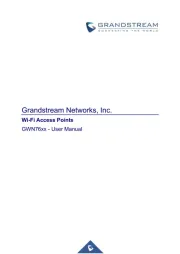
15 September 2025
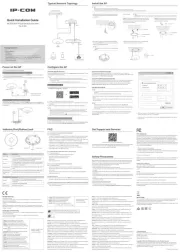
1 September 2025
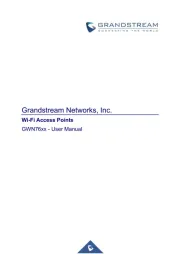
25 Augustus 2025
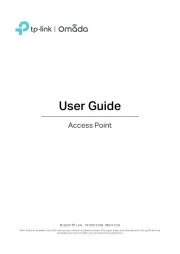
11 Augustus 2025
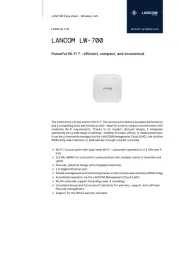
5 Augustus 2025

5 Augustus 2025

5 Augustus 2025
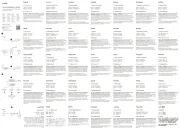
5 Augustus 2025
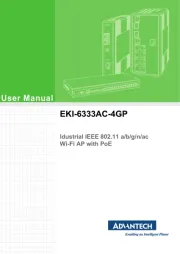
29 Juli 2025